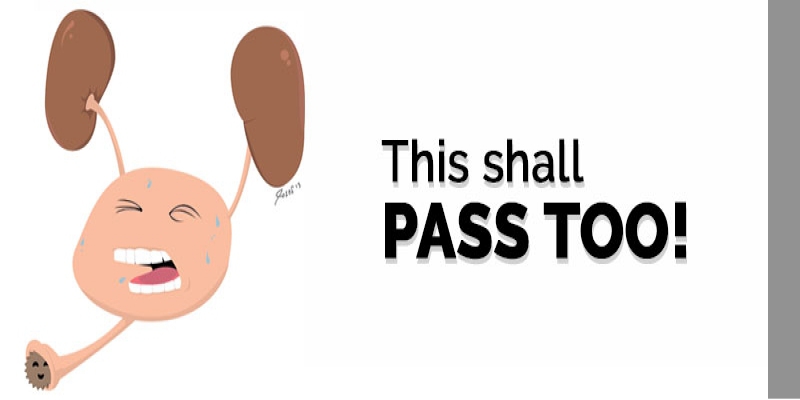How long will it take me to Recover from Kidney Stone Surgery?
2019-04-06 / RG STONE HOSPITAL / Urinary / Kidney Stone

What is a kidney stone?
Urinary stones are aggregation of chemical substances dissolved in urine. When the concentration of these substances reaches a particular point, they crystallize and form stones. The stones may form anywhere in the urinary tract, but are most commonly seen in the kidney and ureter.
How to treat a kidney stone?
Treatment modality depends upon the size, location and nature of the stone and the condition of the patient. It may vary from conservative therapy to surgery. Surgical Management is done to preserve the kidney function while maximizing stone removal and reducing patient morbidity (incidence of disease).
You can have it removed through one of the following:
- Shockwave lithotripsy
- Ureteroscopy
- Retrograde Intrarenal Surgery (RIRS)
- Percutaneous nephrolithotomy or percutaneous nephrolithotripsy
- Open surgery
Extra Corporeal Shock Wave Lithotripsy (ESWL) :
Procedure: In this type of procedure, the doctor will use an X-ray or ultrasound to detect the stone. The high-energy shock waves are directed towards the stone. These waves pass through your skin and break the stone up into small pieces. The doctor might put a slim tube known as a stent into the ureter to help the small pieces pass out through the urine.
Hospital stay and recovery time: Shockwave lithotripsy usually takes about an hour and you can go home on the same day the procedure happens.
You will have to get the stent removed by the doctor after about four to ten days.
Ureterorenoscopy (URS) :
Procedure: For ureteroscopy, the doctor uses a thin scope to detect and remove kidney stones. There won’t be any incision for this procedure. The doctor passes the scope into the kidney through the bladder and ureter. For larger stones, the doctor will use a laser through the scope to break up the stones.
Hospital stay and recovery time: You can go home on the same day the procedure takes place. If you have a stent for draining the urine, you will need to go back to get it taken out after four to ten days. Some stents have a string attached for you to pull it out yourself. However, make sure you follow the doctor’s instructions to remove it yourself.
Retrograde Intrarenal Surgery (RIRS) :
It can be easily used for stones anywhere in the tract. It is especially suited for patients where ESWL cannot be performed (bleeding disorders; obesity) or has failed. Its advantages include no incision on the body, short hospital stay & early recovery. However, the procedure is expensive as the equipment is costly, there is chance of the scope to break, and even doctors need special training to perform it.
Percutaneous Nephrolithotomy or Percutaneous Nephrolithotripsy (PCNL) :
Procedure: For larger stones, or if a lithotripsy is unable to break it up enough, this type of surgery is an option. A small tube is used to reach the stone and break it using high-frequency sound waves.
Hospital stay and recovery time: The surgery takes about 20 to 45 minutes. You will need to stay in the hospital for a day or two afterwards, as recommended by your doctor. You can have a stent put in for draining the pieces.
Open Surgery for kidney stones:
Procedure: This is a rare option for kidney stone treatment, only for very large stones or if the other types of treatment cannot remove or crush the stone. The surgeon makes a cut on your side and into the kidney and removes the stone through the opening. A stent will be placed in the ureter to drain the urine.
Hospital stay and recovery time: You will need to stay in the hospital for six to nine days and the recovery period is longer as compared to the other kidney stone removal procedures.
You must make sure to drink lots of water to flush out the small pieces of stone through your urine after a kidney stone removal procedure and while you have a stent put in.
Categories
Hernia Repair
Appendicitis
Piles
Urological Treatment
Hernia treatment
Enlarged Prostate (BPH)
Gall Bladder Stone
Urinary / Kidney Stone
Vitamins
Indian Health Care System
Exercise
Obesity
Female Urinary Incontinence
Single Incision Laparoscopic Surgery (SILS)
Kidney Cancer
Bladder Cancer
Ovarian cancer
Nephrology
Bariatric Surgery
Kidney Function Test
Female Urology
Radiation Therapy
Alcoholic Fatty Liver
Liver disease
Gastroenterology
Kidney Disease

